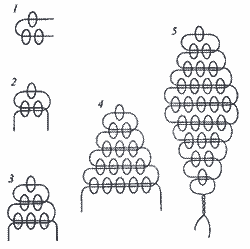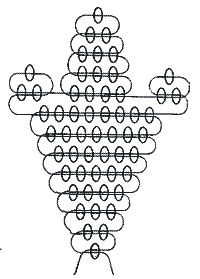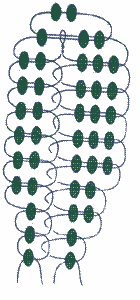The parallel technique of weaving is suitable for manufacturing of any parts, the petals and leaves, wings and Telcel insects, animals... the Principle here is simple: take one end of the wire 3 beads and slide the other end of the wire 2 extreme beads (figure 1-2). Try to make sure that the wire ends were the same length. Then on first end type 3 beads and slide the other end through them (figure 3) and so on. Ending detail, again decrease the amount of the beads (figure 5):

After finishing the part, twist the wire ends. It is obvious that it is not necessary to increase the number of beads. We can make several rows of 2 beads, if you want to weave, for example, the body of a dragonfly.
But not all plants have the leaves smooth. To make the leaves with teeth, we need to complicate parallel netting:

I think to explain not necessary to figure all clearly shown. You need to make with each side of the "loop" and continue easy parallel weave.
It is often necessary to produce a wide sheet. If it's simple parallel-weave - get large gaps between the rows of beads. So you can make the sheet with veined as follows: Complete 2 rows in the usual way. Then to the second row between the beads and attach the second wire. 4 is formed in the wire end. The first two braid left side of the leaf, and the second is right:




